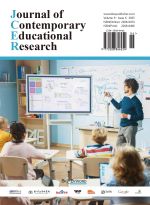Abstract
The digital transformation of international Chinese language education is an important direction for enhancing the global dissemination effectiveness of the Chinese language. In teaching Chinese as a second language, writing, as a form of higher-order language output, has long faced challenges such as insufficient teacher resources, lagging feedback, and a lack of personalized support. Generative artificial intelligence (GAI) offers a new path for teaching Chinese writing. This study, with intermediate Chinese learners as the subjects, systematically explores the effectiveness of GAI-assisted Chinese writing instruction through a combination of controlled experiments and interviews based on a Chinese learning platform embedded with GAI. The study found that the GAI class was significantly superior to the traditional class in terms of the adequacy dimension of content quality and the grammatical and lexical dimensions of language quality; teachers and GAI play complementary roles in this process; most Chinese learners have a positive attitude towards this model. Based on the above findings, this study presents three suggestions: using GAI to empower Chinese writing instruction, giving full play to the complementary advantages of human and machine, and enhancing the AI literacy of teachers and students to achieve two-way empowerment of human and machine, with the aim of promoting the intelligent development of international Chinese education.
References
Center for Language Education and Cooperation, 2022, The Forum on Digital Development of International Chinese Language Education Successfully Concluded: Technology Empowerment and Innovation-Driven Advancement Propel High-Quality Development of Online International Chinese Education.
Yang Y, Jian, JR, Zhang YT, 2025, Second Language Writing Research in the Context of Generative AI: Current Status, Issues, and Prospects. Language and Culture Studies, 33(2): 135–138.
Sun L, 2011, Principles and Models of Teaching Chinese as a Foreign Language Writing. Education and Vocation, (11): 104–105.
Wang CM, 2016, The Learning-Promoting Function of the “Continuation Task” in College Entrance English Examinations. English Learning, (11): 10–11.
Wu S, 2008, Application of the Process-Genre Approach in Teaching Chinese as a Foreign Language Writing. Modern Chinese (Teaching Research Edition), (3): 21–24.
Zong SH, Han XP, 2015, Analysis of Unit Structure in Malaysian Chinese Independent Secondary School Textbooks Based on the “Integration of Reading and Writing” Concept. TCSOL Studies, (3): 59–70.
Zhu XY, 2007, Research on Multimedia-Assisted Teaching of Chinese as a Foreign Language Writing. Journal of University of International Relations, (4): 69–74.
Liu L, Zhou XB, Gao XS, et al., 2023, Panel Discussion: “ChatGPT Is Here: New Opportunities and Challenges for International Chinese Education” (Part 1). Language Teaching and Linguistic Studies, (3): 1–14.
Guo K, Wang DL, 2024, To Resist It or to Embrace It? Examining ChatGPT’s Potential to Support Teacher Feedback in EFL Writing. Education and Information Technologies, 29(7): 8435–8463.
Boudouaia A, Mouas S, Kouider B, 2024, A Study on ChatGPT-4 as an Innovative Approach to Enhancing English as a Foreign Language Writing Learning. Journal of Educational Computing Research, 62(6): 1509–1537.
Wang M, Xu X, et al., 2023, Unleashing ChatGPT’s Power: A Case Study on Optimizing Information Retrieval in Flipped Classrooms via Prompt Engineering. IEEE Transactions on Learning Technologies, 2023(8): 1–13.
Wang YM, Wang D, Liang WY, et al., 2023, “Aladdin’s Lamp” or “Pandora’s Box”: Potential and Risks of ChatGPT in Education. Modern Distance Education Research, (2): 48–56.
Wu JF, Zhou W, Lu DW, 2019, Assessing Writing Quality in Chinese as a Second Language by Korean Native Speakers: Linguistic Features and Content Quality. Chinese Teaching in the World, 33(1): 130–144.
Cheng Y, 2022, Research on Chinese L2 Writing Quality Based on Grammatical Complexity. Language Teaching and Linguistic Studies, (5): 10–22.
Kuiken F, Vedder I, 2017, Functional Adequacy in L2 Writing: Towards a New Rating Scale. Language Testing 34(3): 321–336.
Liu SJ, Li Y, He YW, et al., 2022, Can AI-Generated Feedback Improve Secondary School Writing Instruction? Journal of East China Normal University (Educational Sciences), 40(9): 90–104.
Tsai C, Lin Y, Brown IK, 2024, Impacts of ChatGPT-Assisted Writing for EFL English Majors: Feasibility and Challenges. Education and Information Technologies, 2024(29): 22427–22445.
Cai W, 2023, Chinese Learning and Teaching in the ChatGPT Era. Language Teaching and Linguistic Studies, (4): 13–23.
Gu L, 2023, The Impact of ChatGPT on Training Teachers of Chinese as a Foreign Language and Countermeasures. Journal of Yunnan Normal University (Teaching and Research on Chinese as a Foreign Language Edition), 21(3): 63–70.
Xu JJ, Zhao C, 2024, The Role of Large Language Models in English Language Teaching. Foreign Language Education in China, 7(1): 3–10 + 90.
